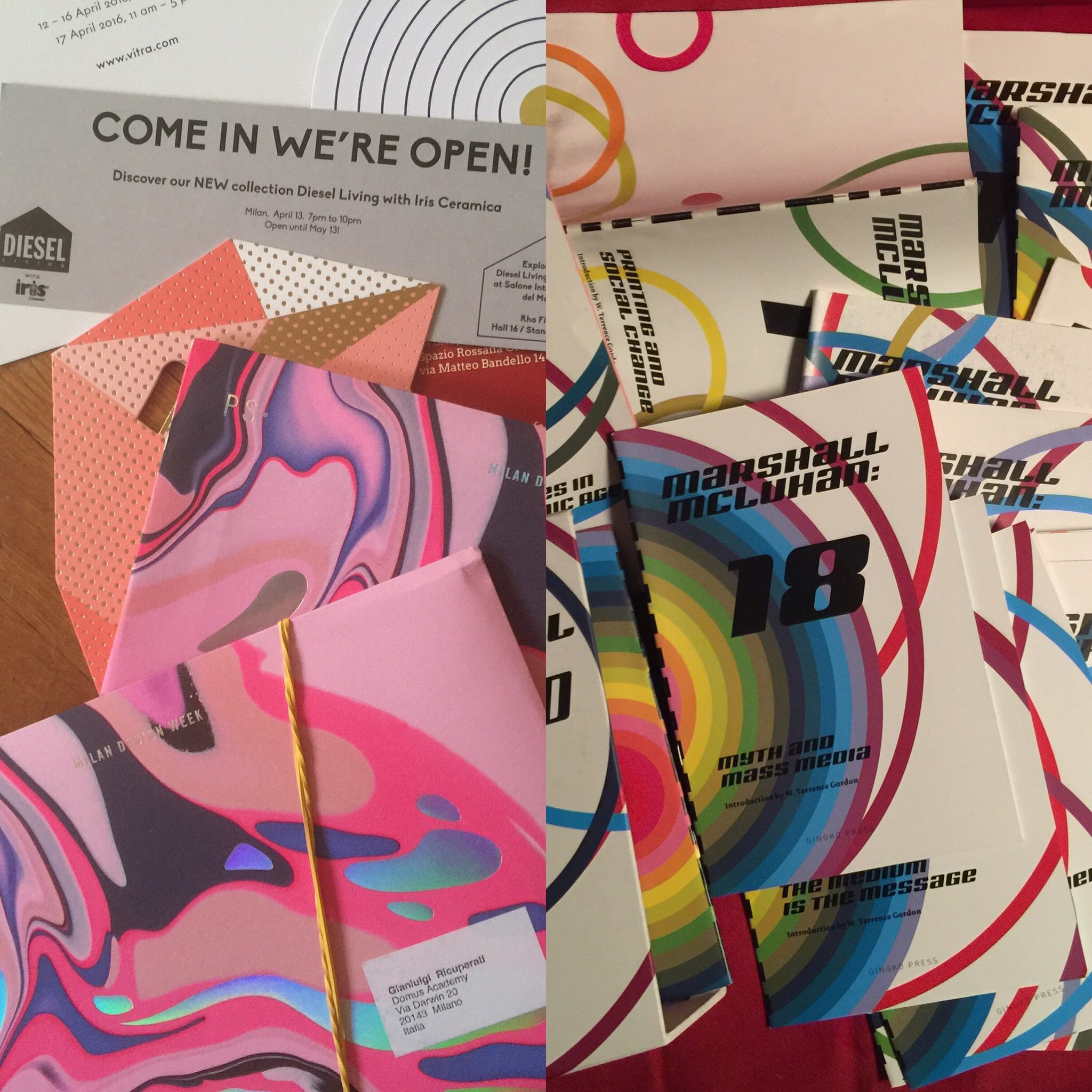Milan Design Week: a Reading List
|Gianluigi Ricuperati
Medieval modernism, good robots and great books: GIANLUIGI RICUPERATI reports back from Salone 2016 and offers some recommended reading.
After splicing Marshall McLuhan into pictures from Salone Del Mobile.Milano’s first day, here is a series of postcards with reading connections, and book obsessions, for the closing.
Objects never fail to show their incompleteness: they are always in need of something to be told through. That’s why in this fair of great objects – in the greatest parade of objects – a reading list is unmissable.
Arita Porcelain = In Praise of Shadows
This made me think of Japanese novelist Jun’ichirō Tanizaki: just pick up a page of In Praise of Shadows and connect the atmosphere with these intelligent, delicate intricate simple threads of form and colour.
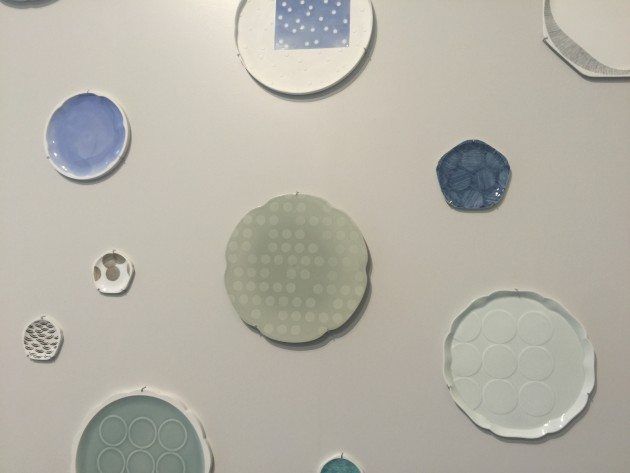
Spazio Rossana Orlandi = Ivy Compton-Burnett’s novels
Rossana Orlandi’s cabinet of wonders is one of the seven miracles of Salone del Mobile and Milan in general. These visitors reminded me of Ivy Compton-Burnett‘s novels: idiosyncratic narratives almost entirely made up of dialogues, with morbid stories twitting on the most reclusive family trees.
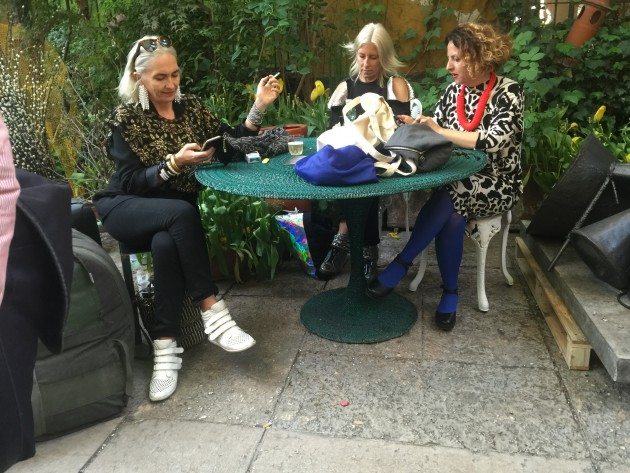
The Hermès pavilion = Masscult and Midcult
The Hermès installation is an absolute display of power: bricks and mortar, newly built interiors, admirable efforts – maybe not entirely worth it. But these wall writings, like most design installation writings I read, denounce a poor literary imagination. Which makes me want to advice for a deep immersion in Masscult and Midcult by Dwight MacDonald, one of the greatest essayist of 20th Century. The title, in this particular context, speak for itself.
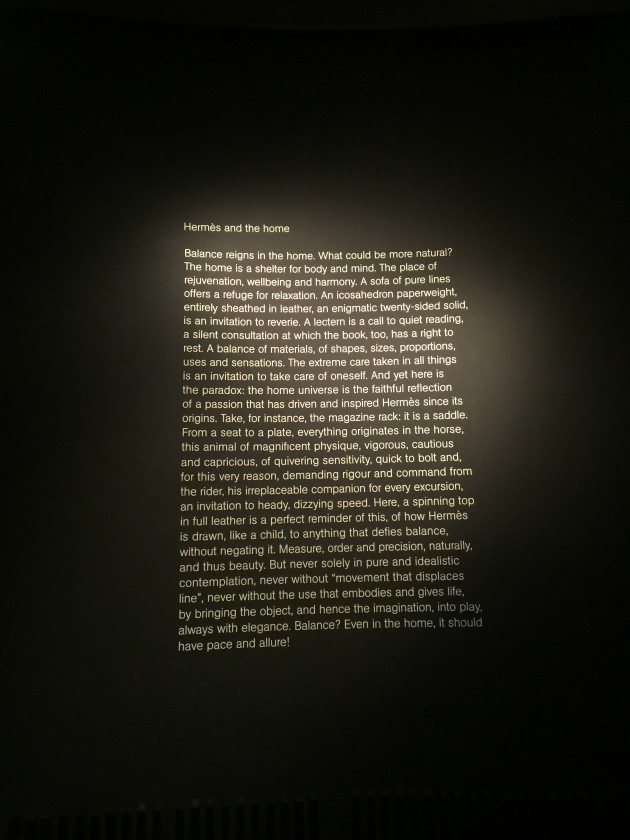
Torre Velasca = Kn
This year Audi, rented Torre Velasca, built by BBPR architects in 1957. It’s an amazing tower, still one of the most revered and charming in the architectural world. Better in the sunlight, this piece of medieval modernism is still relevant: and made me want to go back in the 50s, when inventing new formats was the norm. Which leads to reading Kn, an impressive manifesto for abstract art written in the thirties by Carlo Belli. Kn has been defined by Kandinsky as “the Gospel of what is defined as abstract art”.

Patriciá Urquiola for Cassina = Journey to the End of the Night
Patriciá Urquiola is now the Queen and the King of Salone del Mobile and the only true heiress to the great tradition of Italian design, without being Italian. Her projects, her Proustian buon-gusto, and her wise charisma, are omnipresent without being redundant. One installation was realized for Cassina (now art-directed by Urquiola), below, another was in collaboration with a fearless visual talent named Federico Pepe on a capsule collection of stained-glass furnishings called Credenza. Both made me think of Louis-Ferdinand Céline’s Journey to the End of the Night: not for the content, but for the music of the prose: endlessly energetic, far and absolutely present: radiant and brutal.
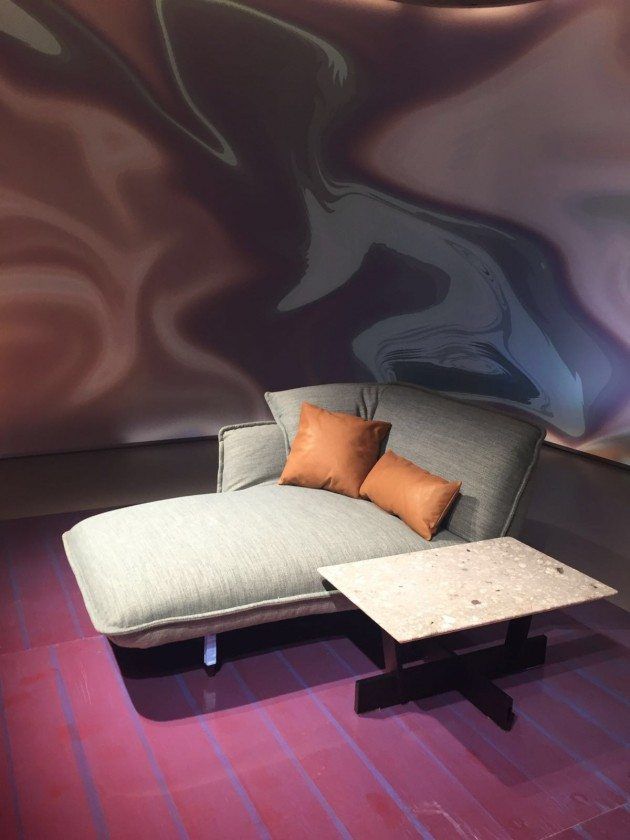
Kram/Weisshaar’s Smart Slab Table = Werner Herzog’s Of Walking In Ice
Nothing better than Werner Herzog’s memoir Of Walking In Ice when in front of the stunning cooling-heating kitchen tables designed for Italian brand Sapienstone by the maverick techno-intellectual duo Reed Kram and Clemens Weisshaar, here portrayed while exchanging precious informations with a classic hero of design.
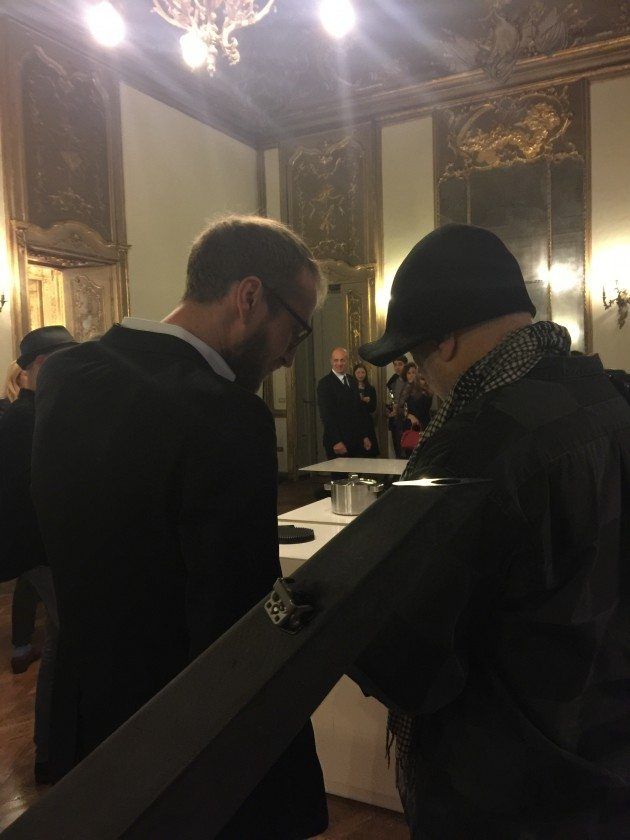
CoeLux sky lamp = The Foundation Pit
This is reinvention, aggression, total control and total mastering of the senses: a lamp which recreates the visual and sensible effect of a severe, clear blue sunny sky, even in the middle of rain showers and fog. This made me want to read again Andrei Platonov’s The Foundation Pit, a masterpiece of Soviet literature in which the communist control of human nature looks very much like the worst kind of eco-unfriendly capitalism.
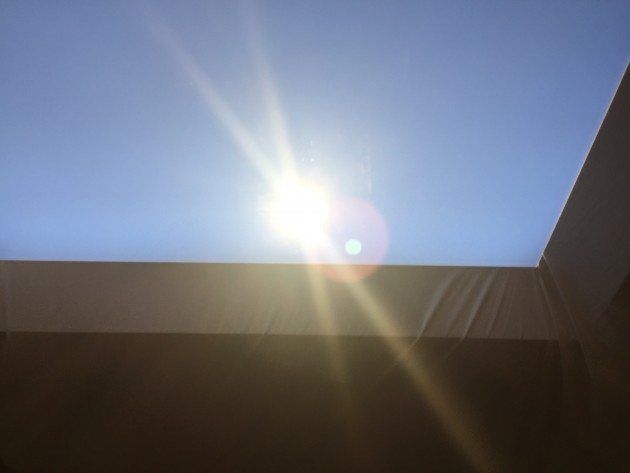
An ikebana-making robot
Last postcard. This robot – displayed in the Noosphere Pavillon of the Triennale, which I co-curated for Domus Academy – was not exactly in our plan. That’s why I include it here, because it’s not exactly self-promotion: Italo Rota, who designed the building, did it on his own, surprising us all, with a beheaded robot making squared ikebanas.
This made me want to step back from any front-line roles, and just be a reader, a viewer, a spectator: someone who profits from the lost art of being genuinely surprised.
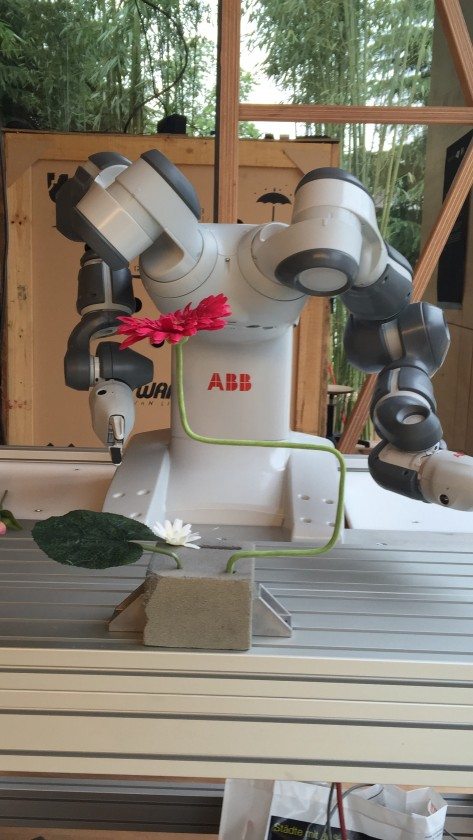
Credits
- Text: Gianluigi Ricuperati

